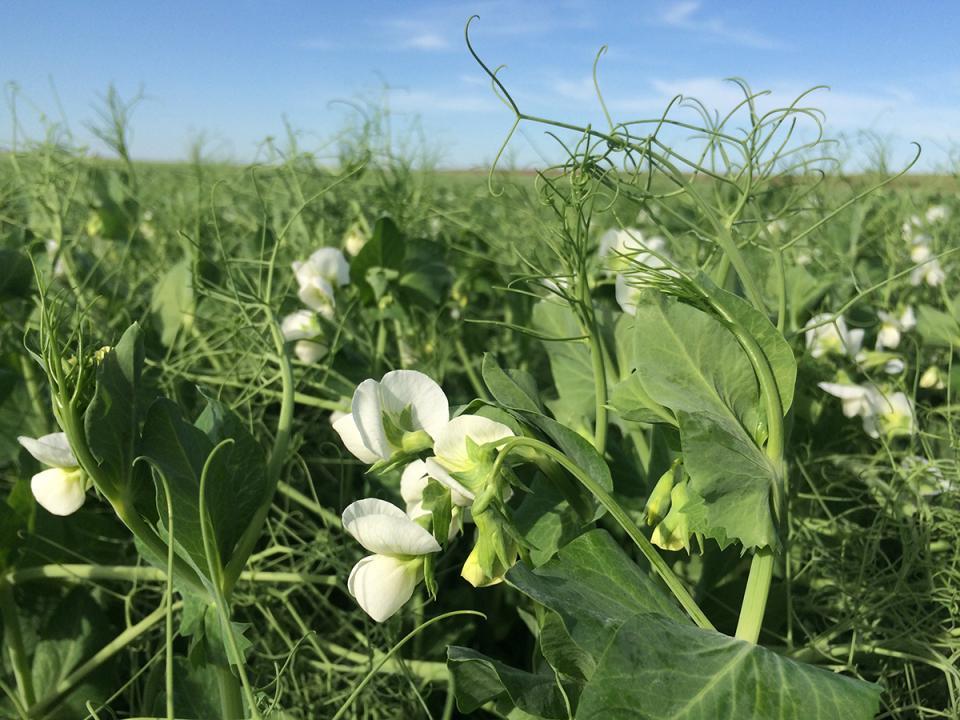


Grass pea (Lathyrus sativus L.) is a dual purpose annual legume grown for its seeds for human consumption, and fodder for livestock feeding. Grass pea is one of the preferred legume seeds in low fertility soils and arid areas because of its outstanding tolerance of dry soil conditions, but it contains a toxic component (ODAP) that may cause paralysis in humans and livestock if consumed in excessive amounts. Grass pea has a variable habit and can be trailing or climbing. It is many-branched with slender stems up to 60 cm in height. It has a deep and strong taproot. The leaves are pinnate, opposite, encompassing 2 pairs of leaflets and a terminal tendril. The leaflets are sessile, linear-lanceolate, 5-7.5 cm long x 1 cm broad.


The nutritional value of khesari (Lathyrus sativus), a grain legume, is also used for growing and laying pullets. Chemical analyses indicated khesari to be high in crude protein (283g/kg) and low in fat (12.0g/kg) with estimated true metabolizable energy concentration of 12.0MJ/kg.

Area & Productivity

Being a winter season crop it prefers temperate climate with good adoption under climatic extremities. Generally, crop requires 15° to 25°C temperatures during sowing to harvesting of crop

Sandy loam and clay loam soils are suitable.

| Variety | Year of Release | Duration (days) | Seed Yield (q/ha) | Agro-climatic Zone | Special Features |
|---|---|---|---|---|---|
| Ratan (BioL 212) | 1997 | 110-120 | 10-12 | All zones (except Hills Zone & Barak Valley Zone) | Negligible ODAP content, suitable for utera cultivation |
| Prateek | 2006 | 115-120 | 10 | CBVZ, LBVZ, NBPZ | Low ODAP (0.109%) and tolerant to wilt and powdery mildew, aphid, pod borer & bruchid |
| Mahateora | 2008 | 115-120 | 10 | CBVZ, LBVZ, NBPZ | Low ODAP (0.074%) and tolerant to wilt and powdery mildew, aphid, pod borer & bruchid |

| Nutrient | Requirement (kg/ha) | Form | Fertilizer Requirement (kg/ha) | Fertilizer Requirement (kg/bigha) |
|---|---|---|---|---|
| A. Without Rhizobium culture | ||||
| N | 15 | Urea | 33 | 4.5 |
| P2O5 | 35 | SSP | 220 | 30 |
| K2O | 15 | MOP | 25 | 3.3 |
| B. With Rhizobium culture | ||||
| N | 10 | Urea | 22 | 3 |
| P2O5 | 35 | SSP | 220 | 30 |
| K2O | 15 | MOP | 25 | 3.3 |
Diammonium phosphate (DAP) @ 75 kg/ha or 10 kg/bigha is to be applied in lieu of urea and SSP in non-inoculated crop. NPK may also be applied in the form of mixed fertilizer.
Seed Inoculation with Rhizobium Culture: Seeds are to be moistened with clean water avoiding excess wetting and culture @ 50 g/kg kg of seeds and PSB @ 50 g/ kg seed are to be inoculated.
Hoeing in inter-row spaces and weeding at 20-25 days after sowing.
Land situation: Medium land
Sowing time: 15-20 days before the harvest of winter rice, when the soil is in moist condition.
Method of sowing: Broadcast
Seed rate: 50-60 kg/ha or 6.7-8 kg/bigha
Seed priming: Soaking of seeds in water for 6 hrs.
Without Rhizobium and PSP inoculation:
With Rhizobium and PSB inoculation (50 g/kg seed each):

Symptoms often appear later in the growing season and are first noticed on the lower (older) leaves. As the disease progresses, the younger leaves will also be affected and the plant eventually dies. In many cases, only one branch or side of the plant show symptoms.

Properly dried seeds of pea should be mixed thoroughly with black pepper seed powder @ 3g/kg of seed for protection against bruchid infestation during storage. Treated seeds should be kept in polybags with outer covering of gunnybags.
| Disease | Fungicide | Dose (g/kg of seed) | Mode of Application |
|---|---|---|---|
| Wilt | Carboxin | 2.0 | Seed treatment |

Harvesting should be done when 75-80% of the pods turn yellow or brown.
Jorhat, PIN - 785013 Assam